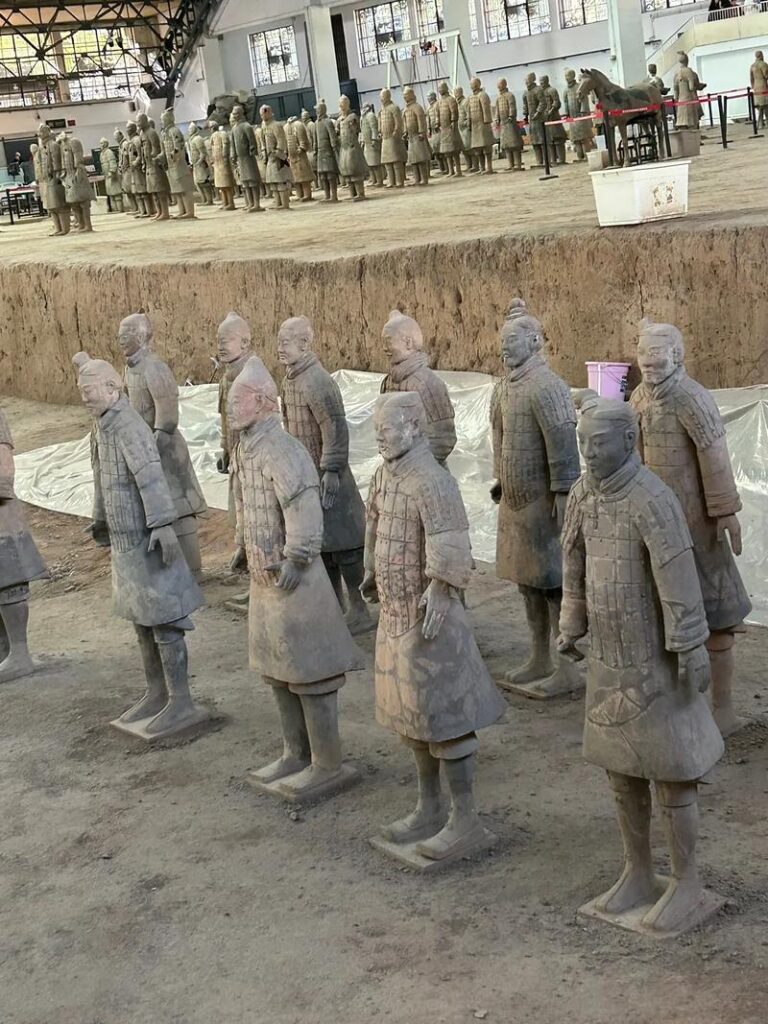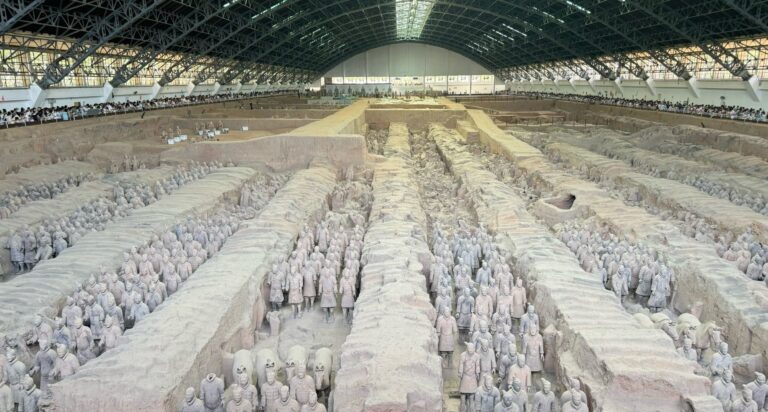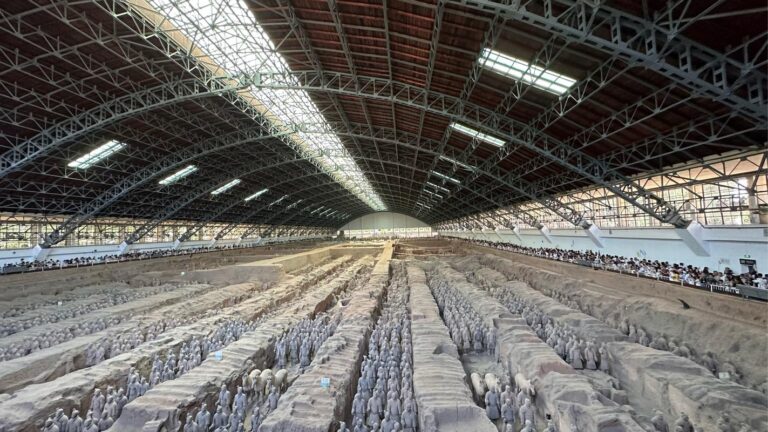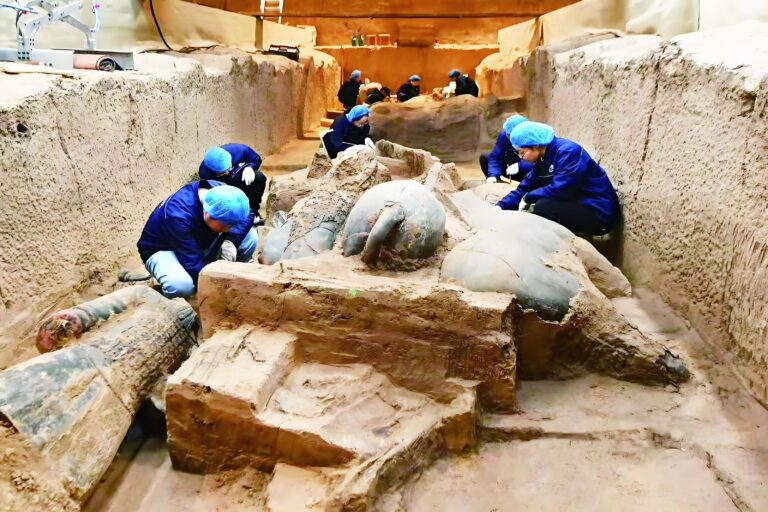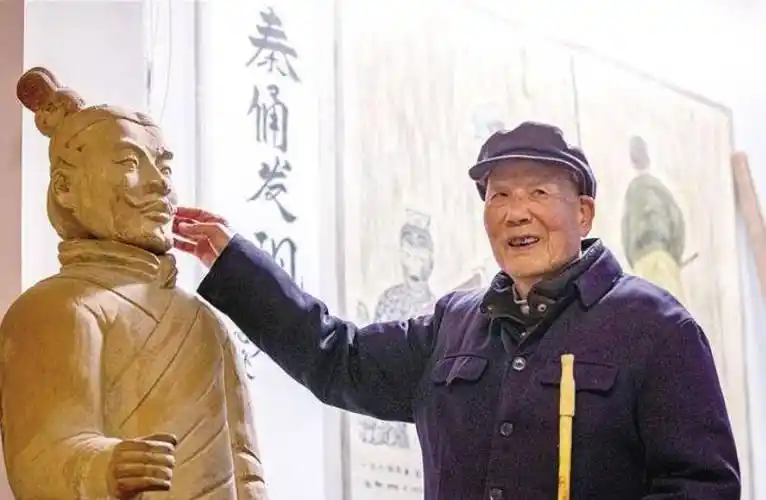How deep were the Terracotta Warriors buried?
The Sleeping Army of the Qin Dynasty: The Mystery of the Terracotta Warriors‘ Burial
When a farmer in Shaanxi Province struck a hard clay fragment with his shovel in 1974, he had no idea that five meters below his feet lay an astonishingly large Qin Dynasty army. These terracotta warriors were not buried haphazardly—archaeological discoveries reveal that Qin Dynasty craftsmen first dug deep pits, then constructed ten load-bearing earthen walls within the pits to divide the space into eleven corridors. The soldier terracotta figures were carefully placed on a brick-paved floor, with a wooden roof structure built above and covered with waterproof mats, before being sealed with compacted earth. The entire structure resembled a meticulously designed underground armory rather than a simple earthen pit burial.
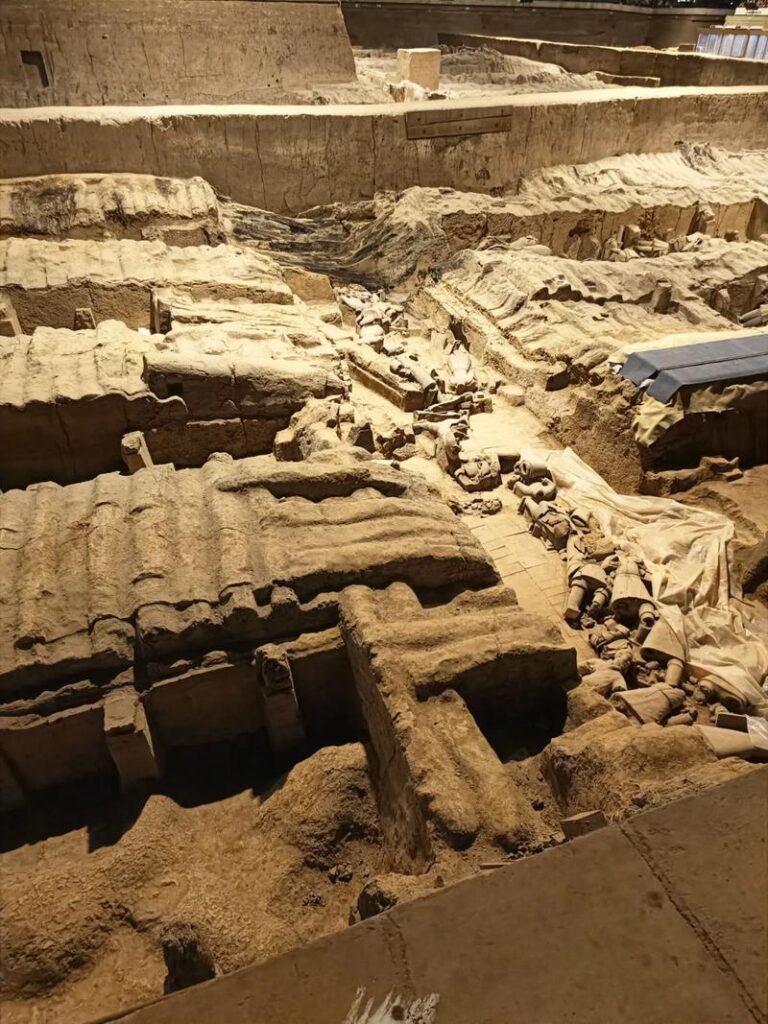
The Underground Palace: A Engineering Marvel 30 Meters Deep
The true resting place of Emperor Qin Shi Huang—the underground palace—is located approximately 30 meters below the mound. Imagine sinking a 10-story building underground: the main chamber of the underground palace measures 170 meters east-west and 145 meters north-south, with a floor area equivalent to eight basketball courts (4,000 square meters). To construct it, the Qin people removed over 500,000 cubic meters of soil—enough to form a convoy of standard trucks circling the Earth twice.
The first step of construction demonstrated advanced wisdom: workers first dug a circular drainage channel, sealed off groundwater with green clay, created a “dry island,” and then excavated the tomb chamber. This precise drainage system kept the underground palace dry for 2,200 years.
The Mystery of Collapse: Why Buried Deep in the Earth?
If the original design was an “underground exhibition hall,” why were the terracotta warriors found deeply buried in the soil? History dealt a double blow:
– Human destruction: Rebel forces from the late Qin dynasty broke in and burned the wooden structures
– Natural erosion: Time caused the remaining wooden beams to rot
The ceiling eventually collapsed, and millions of tons of yellow earth poured in, burying and crushing the terracotta warriors—until they were rediscovered in 1974.
The technological secrets behind the numbers
– Deep controversy: Sima Qian recorded “piercing through three springs” (three layers of groundwater), which, if each layer is 16 meters deep, could reach a total depth of 48 meters. Modern geophysical surveys support the 30-meter theory.
– Mercury rivers: detectors confirmed abnormal mercury levels in the soil, corroborating the Records of the Grand Historian’s description of “mercury as the source of all rivers.”
– Astronomical dome: the ceiling of the underground palace was constructed with stone arches from the Wei River region, adorned with star charts, realizing the concept of “astronomical representation above.”
The Sleeping Truth: Why Did Excavation Cease?
Standing beside the Terracotta Army pits, visitors often ask: Are there more artifacts below? The answer is yes—but archaeologists have voluntarily suspended excavation:
– Color preservation challenges: The terracotta warriors were originally covered in vibrant colors, but upon excavation, the pigments curled and peeled off within four minutes, and current technology cannot preserve them.
– Structural risks: Removing the load-bearing earthen walls could cause the pits to collapse.
– Mercury threat: The underground palace is suspected to contain large amounts of mercury, which may endanger excavation personnel.
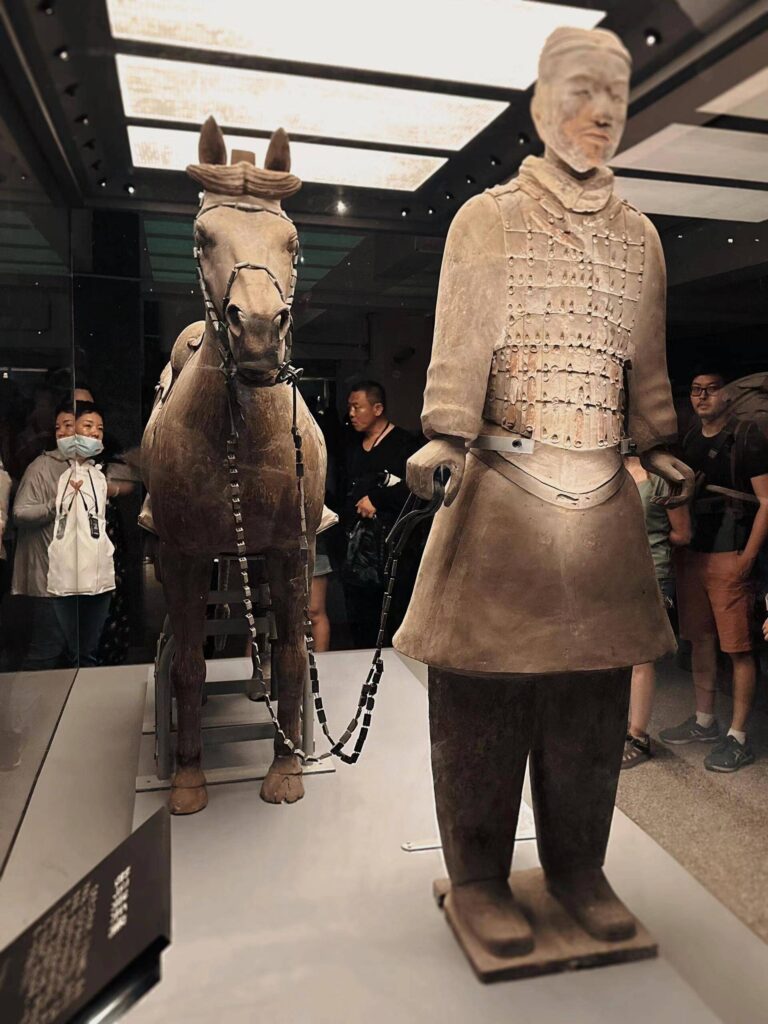
A deeper reason lies in the shift in modern archaeological philosophy: True preservation is not about excavation, but about safeguarding the civilizational codes for future generations.
The burial depth of this “underground army” is a testament to the engineering wisdom of the Qin Empire. Thirty meters of yellow earth block out light, yet freeze time—when American audiences stand before the terracotta pits, the layers of soil beneath their feet mark not just geological strata, but the dividing line of 2,200 years of civilization. Those silent clay soldiers will eventually reveal more historical truths to us, layer by layer, through the progress of modern technology.


